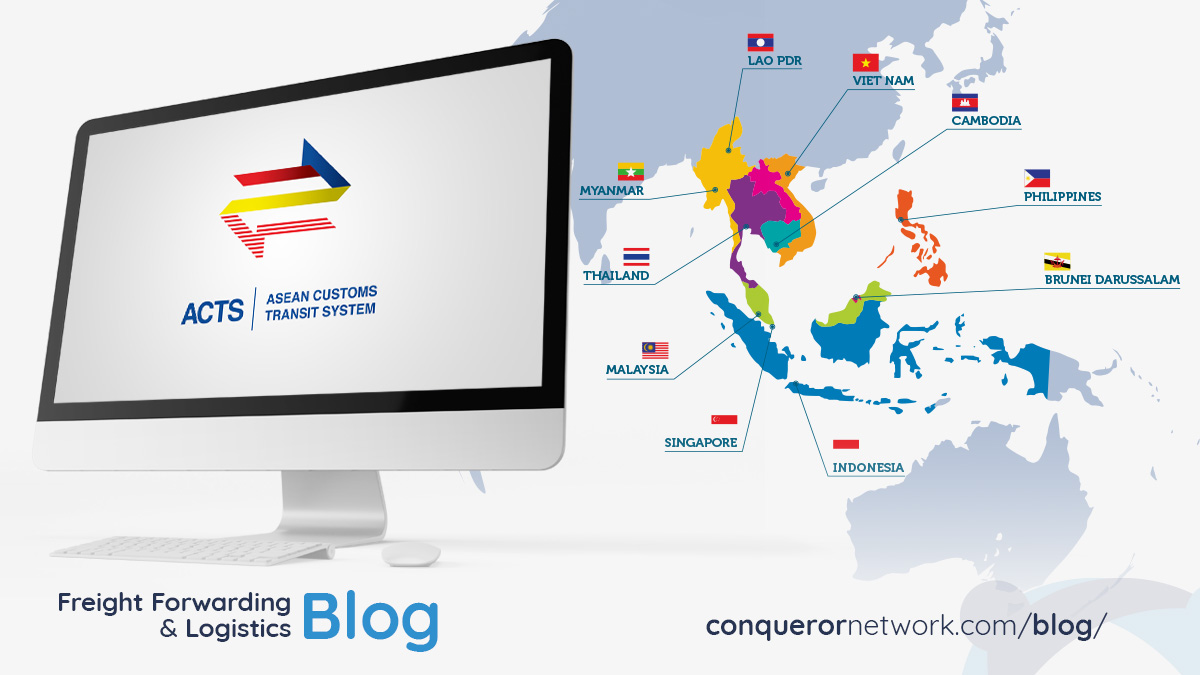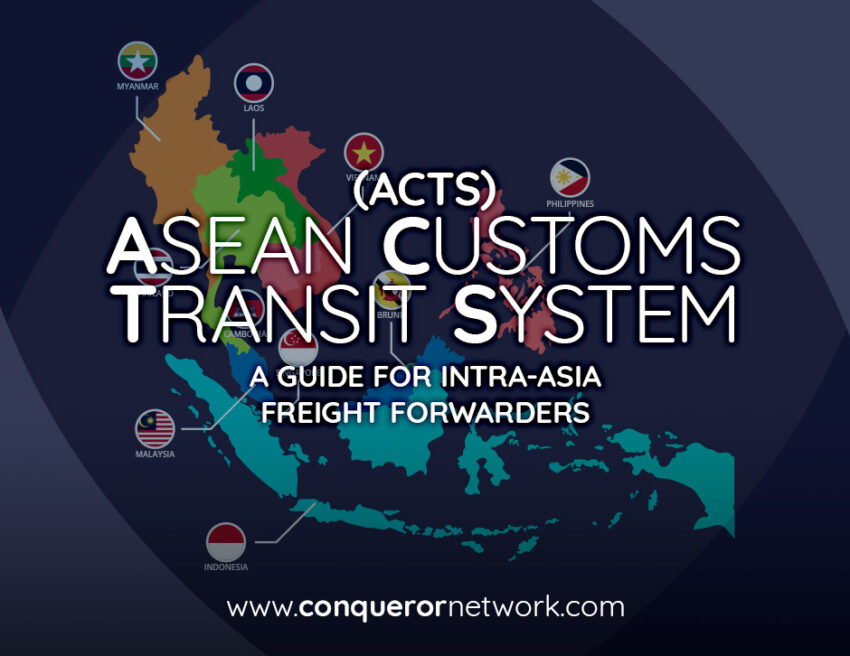How many times have you faced frustrating delays at borders while moving goods across Southeast Asia? Have customs procedures, inconsistent paperwork, or a lack of clarity ever disrupted your delivery timelines? Suppose you’re one of the many intra-Asia freight forwarders trying to optimize cross-border shipments within ASEAN. In that case, the ASEAN Customs Transit System (ACTS) is a game-changer you cannot afford to ignore. In an era where efficiency and speed define success in logistics, ACTS offers a harmonized, paperless, and secure transit solution across multiple ASEAN countries. It allows goods to move seamlessly under customs control from one member state to another using a single guarantee and set of documents. For forwarders moving goods across borders from Thailand to Malaysia, or Vietnam to Laos, ACTS is not just a convenience—it’s a competitive advantage.
Let’s dive deep into how ACTS works, why it matters, and what intra-Asia freight forwarders must know to make the most of this regional innovation.

What is the ASEAN Customs Transit System (ACTS)?
The ACTS is a regional customs transit regime designed to simplify and facilitate the movement of goods across ASEAN borders. Developed by the ASEAN Secretariat with support from the EU, ACTS allows for a single customs transit declaration to be used for moving goods across multiple ASEAN countries without needing to clear customs at each border. The system is electronic and links the customs authorities of all participating countries through a centralized IT platform. This system mirrors the EU’s New Computerized Transit System (NCTS), providing a digital, unified, and paperless solution to facilitate trade within ASEAN. The participating countries currently include Cambodia, Laos, Malaysia, Singapore, Thailand, and Vietnam—countries that are integral to many regional trade corridors.
For intra-Asia freight forwarders, this means faster border crossings, lower administrative costs, and greater control over the cargo journey.
Why ACTS is a game changer for intra-Asia freight forwarders
Before the implementation of ACTS, moving goods across ASEAN borders was tedious, requiring clearance and document processing at each border checkpoint. These traditional processes caused delays, increased operational costs, and created uncertainty for both shippers and customers.
ACTS addresses these pain points. It creates a “corridor of trust” by allowing customs offices at the point of departure to seal and authorize goods for travel across multiple countries. Transit declarations are submitted electronically and only need to be processed once—at the customs office of departure. As long as the cargo remains sealed and the conditions of the transit are maintained, customs inspections at borders can be minimized or avoided altogether.
For intra-Asia freight forwarders managing time-sensitive shipments, such as electronics, pharmaceuticals, or e-commerce goods, this system drastically reduces the risk of border bottlenecks and missed deadlines. It enables forwarders to plan better, reduce inventory lead time, and improve client satisfaction through reliable delivery schedules.
Key features of ACTS every freight forwarder should know
One of the defining aspects of ACTS is the use of a single transit guarantee. This financial instrument ensures the payment of customs duties and taxes should there be a breach of transit rules. The guarantee is valid for the entire journey, from departure to destination, even when the route crosses multiple countries. This eliminates the need for multiple national guarantees, simplifying financial processes and reducing the cost burden.
Another major feature is the electronic processing of transit declarations through a centralized online system. This means fewer documents, reduced clerical errors, and a more transparent supply chain. Customs authorities can track the cargo electronically, enhancing security while ensuring that the goods remain under customs control.
Additionally, ACTS allows for pre-lodgement of documents, which means that customs procedures can be initiated before goods physically arrive at the departure customs office. This further accelerates the clearance process and allows for more flexible shipment scheduling.
How ACTS benefits logistics companies in ASEAN
The most tangible benefit of ACTS is time savings. Cross-border trucking routes that used to take days due to border holdups can now be completed in hours. This is crucial in today’s fast-paced trading environment where customers expect same-day or next-day delivery.
Secondly, ACTS provides greater predictability and cost-efficiency. Fewer customs stops and inspections mean reduced fuel usage, lower vehicle wear and tear, and minimized driver downtime. It also improves transparency, as both logistics providers and customers can trace cargo movements in real time.
Importantly, ACTS encourages more SMEs to participate in cross-border trade by lowering the compliance burden and operational risks. Intra-Asia freight forwarders who help small businesses export to neighboring countries can use ACTS to provide affordable and professional logistics solutions that meet international standards.
Challenges and considerations for intra-Asia freight forwarders
While the benefits are significant, there are still some challenges to address. First, the full rollout and implementation of ACTS across all ASEAN member states are ongoing. As of now, not every country is actively using the system, which means forwarders need to carefully plan their routes and ensure their shipments only pass through participating countries to enjoy full ACTS benefits.
Second, the system requires strong coordination between freight forwarders, customs brokers, and transport operators. Companies need to train their staff in ACTS procedures and ensure their IT systems can integrate with the online transit system. Moreover, setting up a transit guarantee may involve initial administrative hurdles, especially for smaller operators.
Another consideration is that ACTS is designed mainly for road freight. Forwarders using multimodal transport (e.g., combining sea and land routes) will need to ensure ACTS is applicable for each leg of the journey. Intra-Asia freight forwarders must therefore analyze their service offerings and see how ACTS can complement their existing routes and operations.
The role of freight forwarders in promoting ACTS
Intra-Asia freight forwarders are not just users of ACTS—they are also its promoters. By educating clients about the benefits of the system and actively encouraging the use of ACTS for regional shipments, forwarders can position themselves as logistics innovators. This proactive approach can win customer trust, especially among exporters looking for reliable and cost-effective cross-border delivery solutions.
Freight forwarders also play a crucial role in giving feedback to customs authorities and helping refine ACTS procedures. As more companies use the system, real-world data can help improve and expand the initiative to other ASEAN corridors.
Additionally, ACTS is aligned with broader regional trade initiatives, such as the ASEAN Economic Community (AEC) and the Regional Comprehensive Economic Partnership (RCEP). It helps facilitate intra-ASEAN trade, one of the core goals of these regional frameworks.
Final thoughts: A turning point for regional logistics
The ASEAN Customs Transit System is more than just a regulatory update—it represents a fundamental shift in how goods are moved across borders in Southeast Asia. For intra-Asia freight forwarders, this is a rare opportunity to streamline operations, reduce costs, and deliver better service to clients.
As the global supply chain continues to evolve, forwarders who adapt to regional innovations like ACTS will stay ahead of the curve. By embracing this system and aligning their services accordingly, they can play a pivotal role in reshaping logistics in one of the world’s most dynamic trade regions.
If you’re an intra-Asia freight forwarder seeking to expand your regional footprint, improve delivery timelines, and future-proof your business, the time to explore ACTS is now.


